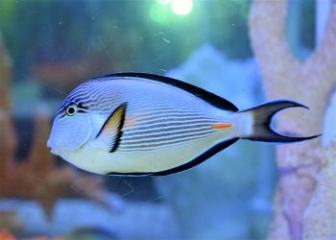Emperor Angelfish - Characteristics, Behavior and Care
Blog | by
Emperor Angelfish, a saltwater aquarium fish with eye-catching appearance and colorful blue and yellow striped patterns, high price, large size.
The Emperor Angelfish is an ornamental fish from the Indian and Pacific Oceans. It has a vibrant coloration with a blue-purple background combined with bright yellow stripes. It has a majestic and dignified demeanor, making it a perfect accent for an aquarium.
In the article below, let's learn more about emperor fish to understand the origin, habits and how to raise this nice fish species.
Emperor Angelfish Information:
|
Scientific name |
Pomacanthus imperator |
|
Common name |
Emperor Angelfish, Emperor Angelfish, Emperor Butterfly Fish, Emperor Angelfish |
| Class | Ray-finned fish - Actinopterygii |
| Set | Sea bass - Perciformes |
| Surname | Pomacanthidae - Pomacanthidae |
| Spend | Pomacanthus |
| Species | P. imperator |
| Source | Warm waters of the Indian and Pacific Oceans |
| Size | |
| Lifespan |
Origin of Emperor Angelfish
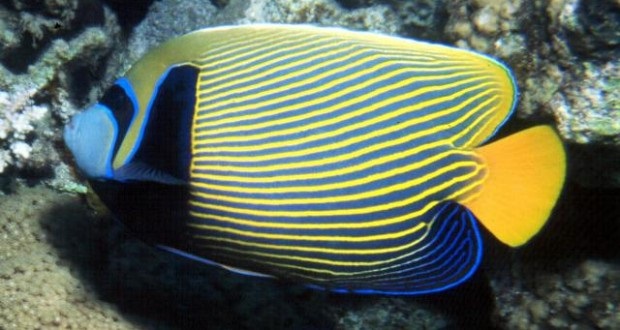
Emperor Angelfish has the English name Emperor Angelfish.
Emperor Angelfish, also known as Pomacanthus imperator, is a marine aquarium fish native to the warm waters of the Indian Ocean to the Pacific Ocean, specifically as follows:
- Indian Ocean: Fish occur mainly in coral reefs near the Red Sea, Maldives, Sri Lanka and India.
- Pacific Ocean: Seas around the islands of Indonesia, Philippines, Australia, Fiji,...
Emperor Angelfish prefers to live in places with many coral reefs and reefs, with a depth of about 1 - 100 meters, most commonly from 5 - 25 meters. This fish species not only has a high aesthetic role but it also makes an important contribution to the marine ecosystem when it eats algae and small animals to control the growth of algae compared to coral reefs, bringing balance to the ecological environment.
Physical characteristics of Emperor Angelfish
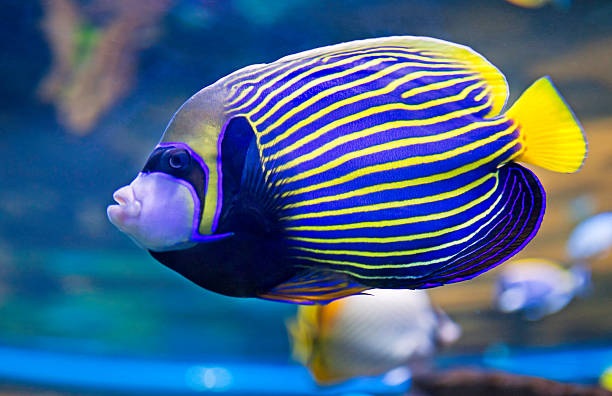
The impressive appearance of an emperor fish,
Emperor Angelfish is a beautiful marine aquarium fish, easily recognizable by its distinctive color and pattern. Let's learn more about the appearance of this fish.
- Size : Adult fish 35 - 40 cm, juvenile fish from 3 - 5 cm.
- Shape : Oval, flat, slightly long body
- Color of baby Emperor fish : Baby fish are dark blue (almost black) with black and white swirls all over the body, completely different from the adult fish.
- Adult Emperor Fish Color : Blue-purple is the main color, combined with yellow diagonal stripes running across the body to create an impressive striped pattern. The head is dark blue, with a black stripe bordered by blue running across the eyes, the cheeks and snout are white or light gray, and the back of the head has an orange border.
- Dorsal fin : Long, running from the back of the head to near the tail, pointed dorsal fin.
- Caudal fin : Fan-shaped, often with bright yellow tint.
- Mouth : Pointed, slightly slanted upwards.
Emperor Angelfish Behavior
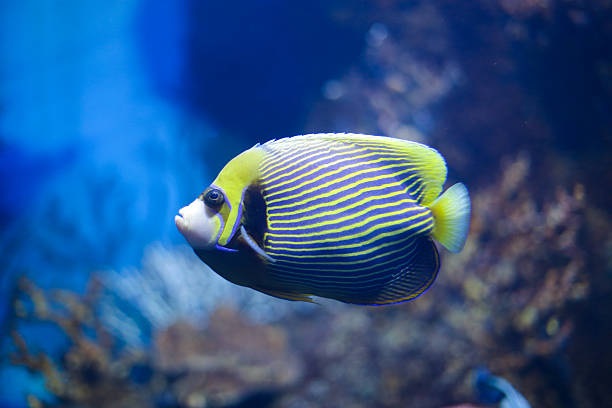
Emperor pompano prefers to live alone.
Emperor Angelfish is considered an intelligent, territorial and independent aquarium fish. Let's learn more about the habits of this fish.
Highly territorial
Emperor Angelfish are highly territorial fish, especially in adults, they will choose a certain area in the coral reef or aquarium to live and will always be vigilant, chasing away other fish that intend to violate the territory.
Therefore, in captivity, it is best to keep only one cichlid unless you have a super large tank.
Quite aggressive personality
The emperor fish is often aggressive towards other fish, especially those of similar color and size. But it is also quite peaceful with gentle fish that do not intend to fight over territory.
Smart, adaptable
Emperor Angelfish is very intelligent, it has a good memory, can remember feeding locations, remember the face of the keeper and the usual feeding time. In the aquarium environment, after a period of getting used to it, this fish is very tame with people.
Behavior changes with age
When young, the emperor fish is very shy, often hiding in coral reefs, preferring to live alone. As adults, this fish likes to show its territoriality, often moving slowly in its area to show its authority.
Active during the day
Emperor fish are always active during the day, but at night, they will seek shelter in crevices or coral reefs. So when raising them in a tank, you need to create many caves and reefs for them to hide and rest.
Don't live in a herd
In nature, it is very difficult to see emperor fish living in schools, at most they live in pairs, male and female, breeding together and protecting their territory.
Instructions for raising Emperor Angelfish at home

Emperor fish like to live next to coral reefs.
Emperor Angelfish is an adaptable fish if cared for properly, however it is not for the inexperienced keeper. To raise and care for this fish well, please follow the instructions below:
Prepare a suitable tank for raising emperor fish
First, you need to prepare a large enough tank with conditions similar to the emperor fish's natural marine environment. Specifically as follows:
- Minimum tank volume : 300 - 500 liters, minimum length 1.2 meters, high and deep, the larger the tank the better.
- Salinity : 1.020 - 1.025 (SG)
- Filtration system : Choose a strong filtration system because fish need clean, oxygen-rich, stable water, add a protein skimmer to remove dissolved organic matter in the water.
- Aeration system : A circulating aeration system should be run to provide dissolved oxygen and create a gentle flow.
- Temperature : 24 - 28 degrees Celsius.
- pH : 8.1 - 8.4
- Aquarium decoration : Need to create many caves, fake or live coral reefs so that fish have many hiding places in the back, spacious and airy in the front.
- LED lighting system : Use specialized LED lights for marine aquariums.
- Heater, cooling fan : Need to be equipped to keep the temperature stable.
What do Emperor Angelfish eat?
Emperor Angelfish are omnivorous but more carnivorous. In the wild, they feed on sponges, small crustaceans, and marine algae.
In captivity, they can eat the following:
- Frozen foods such as shrimp, mollusks, artemia.
- Special pellets for marine fish.
- Green vegetables, dried seaweed,...
Note : Only feed fish 2-3 times per day with just enough food.
Common diseases in Emperor fish
Although the emperor fish is a highly resistant ornamental fish, with good adaptability when raised in stable conditions. But they are also susceptible to some common diseases due to stress, fungus, parasites... Here are some common diseases in this fish species, let's find out now.
| Disease name | Reason | Symptom | Treatment |
| White spot disease | Sudden temperature changes, dirty water, stress |
Tiny white dots appear on the fish body Fish swim jerkily, often rubbing against rocks and coral. Fish stop eating, or breathe heavily |
Isolate sick fish Increase temperature to 29 - 30 degrees Celsius for 3 - 4 days Use white spot medication in fish at recommended dosage. Increase oxygen, change tank water |
| Skin parasites | Parasites are transmitted from newly introduced fish into the tank that have not been quarantined. |
The fish swim jerkily, often rubbing against rocks. Red scratches appeared on the body. Fish stop eating, tired |
Isolate fish in separate tank Bathe fish with lightly diluted salt. Or use antiparasitic drugs. |
| Dermatitis, body ulcers | Bacteria attack open wounds, polluted water environment | Fish have ulcers, peeling scales, and mucus |
Isolate sick fish to avoid cross-contamination in the tank. Use antibiotics for fish. Aeration, cleaning, changing tank water |
Notes when raising Emperor fish
To be successful in raising Emperor Angelfish, please note the following:
- If kept in a community aquarium, the cichlid should be added last to reduce territorial competition.
- This fish should be raised from a young age to help it get used to the environment and the breeder.
- When you first put fish in the tank, you should reduce the LED light to the maximum and limit noise so that the fish can adapt to the new environment faster.
Emperor Angelfish Price List
Emperor Angelfish is one of the marine ornamental fish with quite high price, but is still very popular because of its beautiful color, regal character. Below is the price list of emperor fish that we have compiled, please refer to it.
| Emperor fish size | Reference price (VND/piece) |
| Small Emperor Fish 5 - 8 cm | 1,500,000 - 2,800,000 |
| Medium sized emperor fish 10-15 cm | 3,000,000 - 4,500,000 |
| Adult Emperor Fish > 25 cm | 6,500,000 - over 9,000,000 |
| High quality emperor fish, beautiful appearance, high purity | Over 15,000,0000 |
Beautiful Emperor Angelfish Pictures
We invite you to admire the collection of the most beautiful Emperor Angelfish images with brilliant colors and impeccable charisma, to know why this fish is so popular in the marine aquarium community.

Frontal view of an emperor pompano.

Image of Emperor Angelfish as a baby.
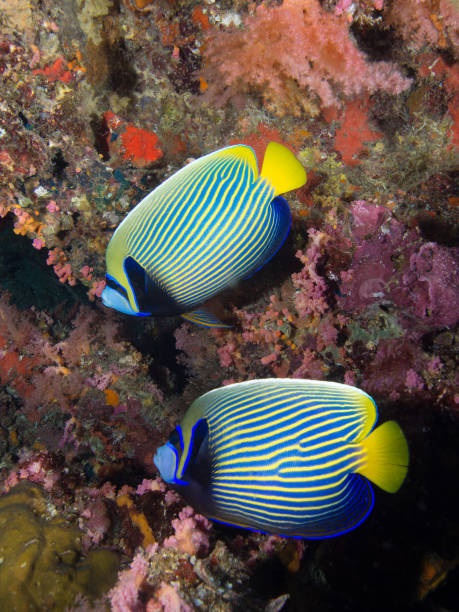
Rare image of a pair of fish (Emperor Angelfish)
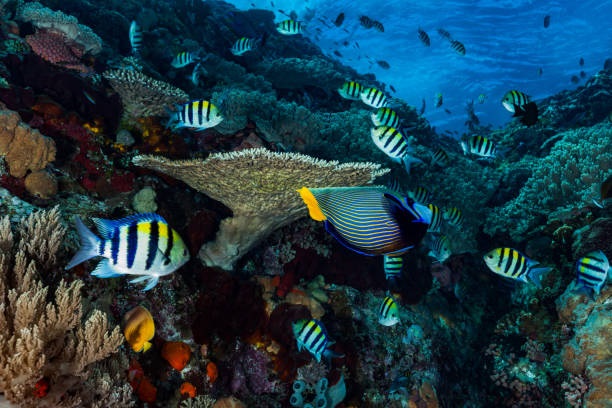
Image of emperor fish swimming in the vast ocean.
Thus, through the article that nicefish.net shared above about Emperor Angelfish, you must have clearly understood the habits, morphological characteristics as well as how to raise this fish species. If you are looking for a new element for your saltwater aquarium that is both a highlight and a show of class, Emperor Angelfish is a great choice.
If you want to learn more about fish in the rich aquatic world, visit our Blog section now!
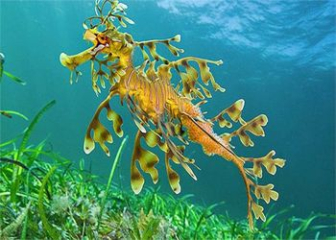
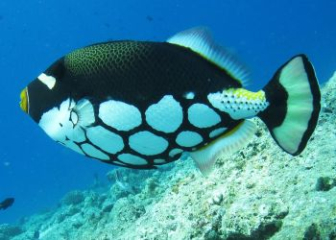
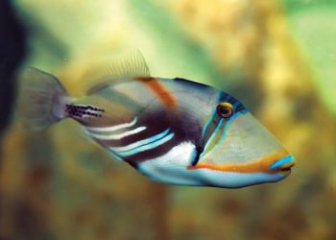
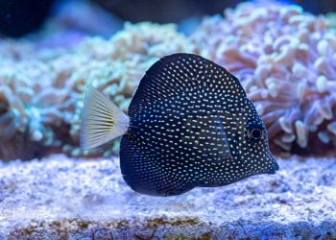
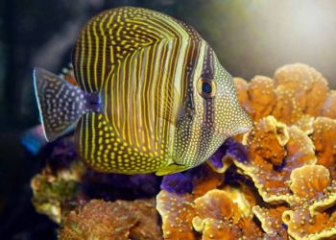
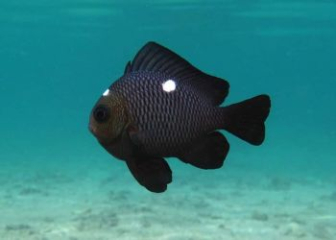
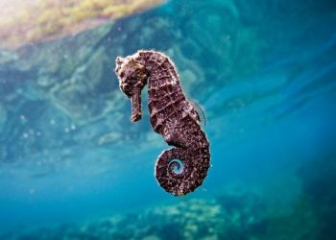






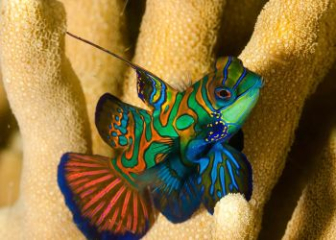

_350x250.jpg)


